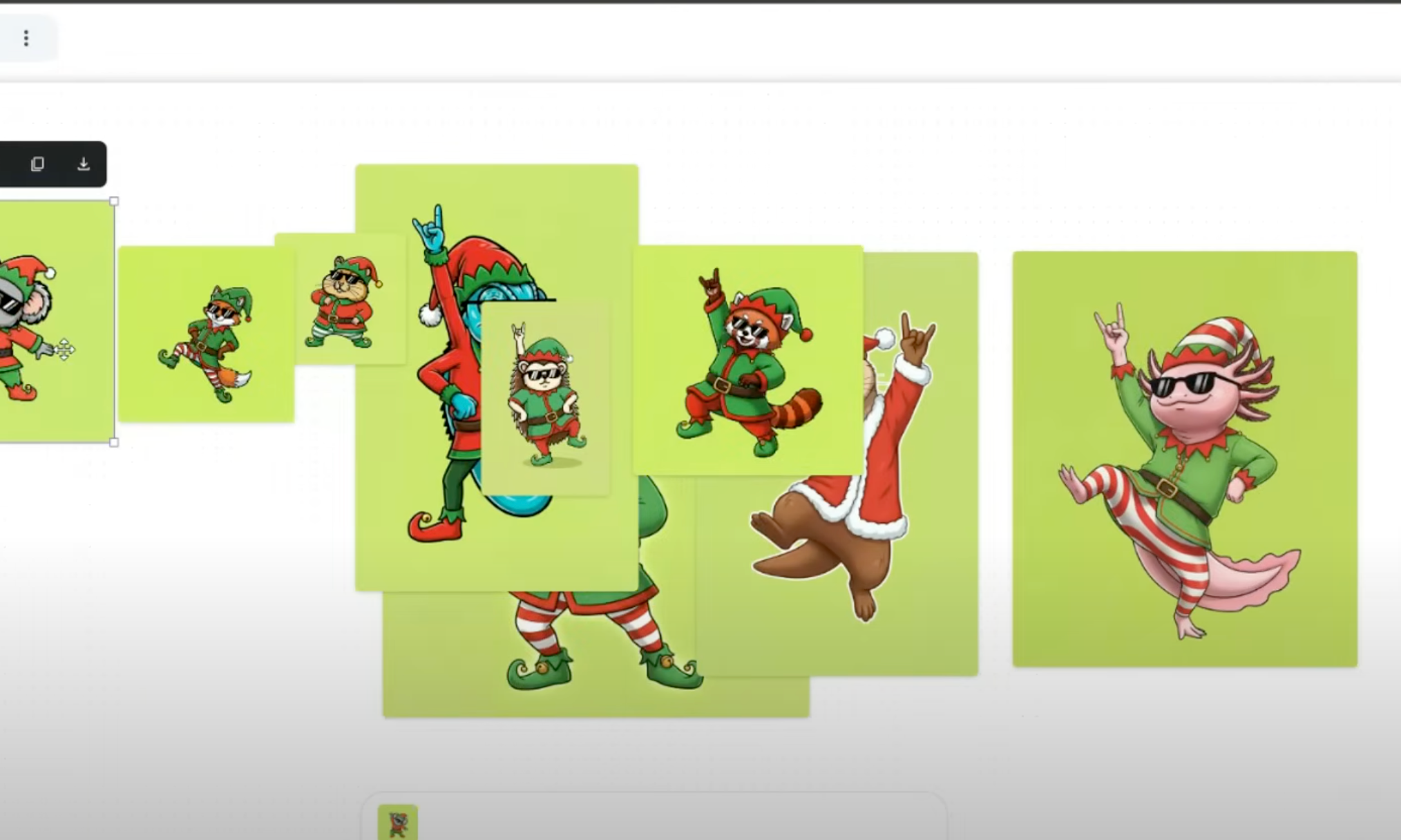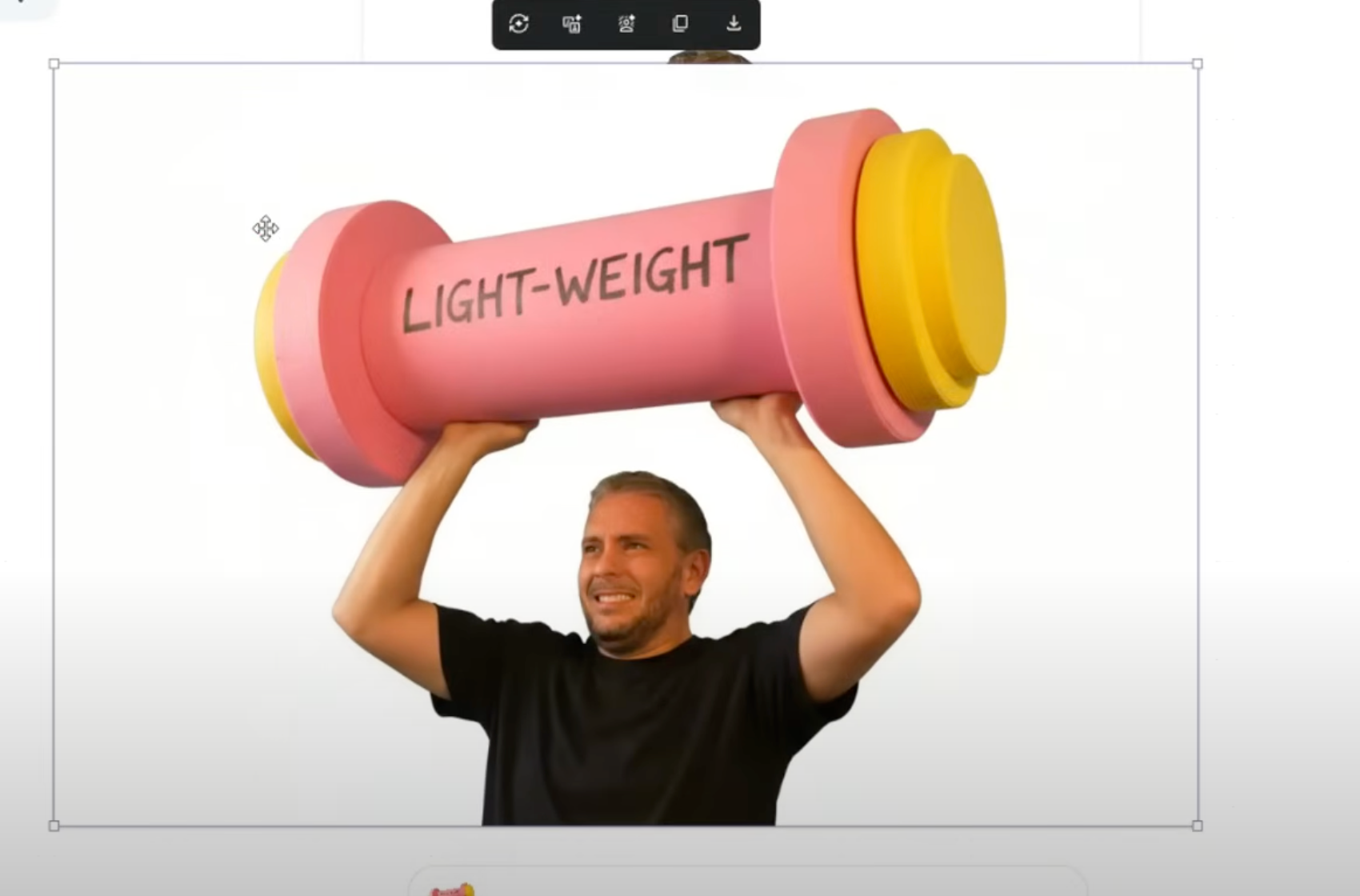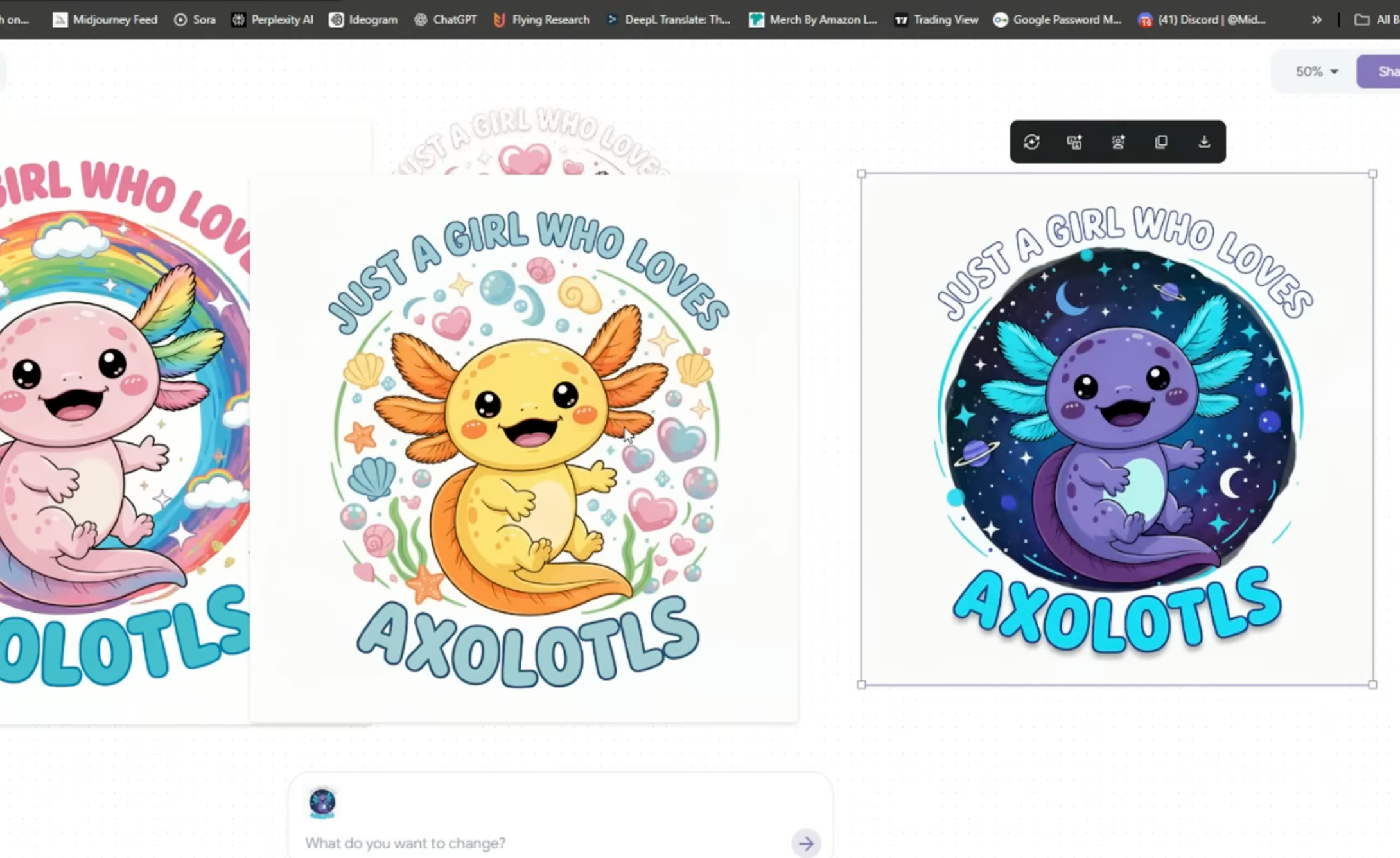- Blog
- FREE Unlimited Mixboard AI - Nano Banana in BULK!
FREE Unlimited Mixboard AI - Nano Banana in BULK!
Mixboard: The Complete Guide to Batch Image Ideation, Mockups & Merch Design
Core keyword: mixboard
Introduction
The experimental Google tool mixboard enables users to create AI images by using mood-board thinking which introduces a new creative process. The creator workflow produced various on-brand content variations from a single prompt which included both Etsy sweater mockups and dancing character poses and holiday-themed merchandise art. The article converts disorganized transcript content into an organized system that makes it possible for users to work efficiently with mixboard through its features for rapid ideation and uniform styling and background control and batch export capabilities.

Table of Contents
- What is mixboard and why it matters
- Access & setup: getting into mixboard quickly
- Core workflow: one prompt → many images
- Advanced mixboard controls
- Merch pipeline with mixboard (Axolotl case study)
- Production tips for mixboard users
- Troubleshooting & limitations
- FAQs about mixboard
- Conclusion: getting the most from mixboard
What is mixboard and why it matters
The Google experiment mixboard allows users to produce multiple images with matching style by using a single input command. The testing process allowed creators to produce between 20 to 25 images from a single prompt which transformed their work from individual step-by-step creation into a unified batch operation. The platform mixboard enables brand owners and Etsy sellers and social teams to speed up their operations.
- Concept exploration: try scenes (library, studio, fall foliage), colorways, outfits, and poses in minutes.
- Subject consistency: keep “the same person/design” while changing backgrounds or activities.
- Merch readiness: produce on-theme variations (Christmas, Halloween) and export with backgrounds tuned for easy removal.
The key value of mixboard is speed with control: you iterate widely without losing the thread of your creative direction.

Access & setup: getting into mixboard quickly
- Availability: mixboard is in beta and commonly referenced as US-only during tests. If you’re outside the US, the transcript notes that some users tried VPNs to evaluate features. Always follow local laws and platform terms.
- Start a project: Search “mixboard” on Google → open the Google Apps result → Get started → New project.
- Network hiccups: The transcript mentions occasional errors (often from a slow VPN). Simple fixes included refreshing the page and retrying.
Tip: Keep your prompts and reference assets handy so you can quickly re-run a batch after any transient error.
Core workflow: one prompt → many images
Case 1: Etsy sweater mockups in one go
Goal: Keep the design and sweater consistent while generating five different lifestyle scenes from one prompt (instead of five separate runs).
Steps (as used in the transcript)
- Import an Etsy-style sweater mockup as your base.
- Prompt for five variants: e.g., “Same design and sweater; vary scene and color harmoniously.”
- Review outputs: examples included painting studio, library, reading, fall scene, even a skateboard moment—all consistent with the same subject and design.
- Keep the best, discard the rest; iterate colors minimally (e.g., “change sweater color to X”).
Why this works in mixboard
- You seed with a clear base subject (the sweater graphic) and let mixboard re-stage it across contexts, preserving brand identity while boosting visual variety.
Case 2: One subject, many scenes
Goal: Combine previously generated personas into one image; verify that clothes, props, and facial identity read as the “same character.”
Observed behavior
- mixboard can group multiple “versions” of the same character (e.g., artist, reader, skater) into a single composition.
- Minor edits appear (e.g., hair tweaks, pants added, a coffee cup retained) while sweater design and color stay recognizable.
Takeaway
- mixboard aims for semantic continuity (pose/prop logic) while keeping the brand cue (sweater + design) intact—perfect for carousel posts or collection banners.
Case 3: Seasonal looks, color swaps & aspect ratios
Goal: Shift a set to winter, update colorways, and change framing.
Prompts used
- “Change to wintertime; give me three variations; aspect ratio 2:4.”
- “Change all sweaters to white.”
Results
- It produced winter scenes; color overwrite worked across the set.
- AR changes were respected; some runs benefited from more specific prompts (e.g., “light snow, neutral palette, soft daylight”).
Advanced mixboard controls
Full-body outfits & identity consistency
Use case: “Show full body, wearing these three outfits.”
- mixboard reconstructed jackets, jeans, glasses, shoes, and even props like notebooks with reasonable fidelity.
- Not every micro-detail is perfect (e.g., a shirt pocket might be missing), but creators rated batches around 8/10—good enough for selection and light edits.
Prompting tips
- Specify key items (“blue denim jacket, black watch, white sneakers”).
- Add lighting & background (“studio gray, soft key light”) to keep comparisons consistent.
Pose packs: “make them look like they’re dancing”
Batch prompts like “five different dance styles” or “five hilarious poses” produced pose packs usable for stickers, emotes, and product thumbnails.
- Discard any odd outliers; mixboard excels when you keep the winners and re-spin on that style (“do five more like #3”).
- Great for social motion cues: limbs angled, heads turned, props raised—images “feel alive.”
Creative themes: “king of coffee/ice cream”
To build personality sets, prompts such as “as the king of 5 different foods” yielded cohesive theme series (coffee beans, donuts, peppers, ice cream).
- These are strong for merch banners or category pages where humor + clarity sells.
- Keep color harmonies tight so the collection reads as one line.

Merch pipeline with mixboard (Axolotl case study)
Holiday variants from one base design
Starting from a single axolotl graphic (hand sign), mixboard generated five holiday versions (e.g., Christmas sweaters, gingerbread, seasonal icons).
- Small imperfections (a mitten or candy cane) were quick-fixable.
- Additional prompts refined text color (“make top text blue”) or character color (“change axolotl to gray”).
Result: 100% sellable picks emerged quickly—exactly what mixboard is for: turn one idea into many SKUs.
10-at-once ideation & background keys
Creators pushed mixboard to return ~10 images at once, then standardized backgrounds to simplify post-production:
- “Change background to hot pink” → high contrast against edges.
- “Make background neon/lime green” → easy background removal in downstream tools.
Pro tip: Keep a color-key template (neon green, hot pink, teal) so all batch outputs are cut-out ready for mockups or marketplace thumbnails.
Expanding to niches: animals, flags, phrases
- Animals: “Make five similar designs: axolotl, goose, raccoon, frog, dog.” Results included catchy captions (“Forever chilling,” “Honk if you love chaos”).
- Scale to 10: “Do 10 more in the same pose/style” → rapidly fills a collection grid.
- Flags/countries: “Do versions for Brazil/India/Japan/UK,” then standardize backgrounds for uniform storefronts.
- Phrases: Build text-driven tees/tote slogans; mixboard helped propose stylistic variations (lettering rhythm, icon accents).
Production tips for mixboard users
-
Batch with intent
- Start with 5–10 outputs per concept; expect 2–4 keepers.
- Lock a style direction early (“studio white, soft shadows, centered subject”).
-
Consistent brand anchors
- Keep one unchanging element (logo/sweater design/character silhouette).
- Let mixboard vary context, pose, and color around that anchor.
-
Background strategy
- Use neon green/hot pink backgrounds for fast AI background removal later.
- For lifestyle shots, prompt matching palettes so scenes look intentional.
-
Quality control loop
- Cull outliers immediately; duplicate winners and iterate (“more like #2 but with scarf”).
- Fix micro-issues (hands, edges) in a light retouch pass.
-
Prompt hygiene
- Be specific, but not verbose: item list, mood, lighting, camera angle.
- When something’s off, change one variable at a time (color → pose → background).
Troubleshooting & limitations
- Region & beta status: mixboard may be US-only during testing; features and limits can change. If you evaluate from abroad, ensure legal compliance and follow Google’s terms.
- Occasional errors: If a batch stalls or the canvas glitches, refresh and re-run the last prompt. Keep references ready.
- Identity drift: Minor changes (hair, pocket details) can appear; restate critical details (“same face & hairstyle; retain sweater logo”).
- Batch loss: On rare runs, a few images may not render or “vanish” from view; re-prompt or export winners ASAP.
- Perfection vs. speed: Treat mixboard as an idea generator + 80/20 tool; plan a brief polish step before publishing.
FAQs about mixboard
Q1: How many images can mixboard generate per prompt?
A: Tests in the transcript ranged from 5 to ~25. Your limit may vary with account access and current beta settings.
Q2: Can I keep the same person/design across scenes?
A: Yes—mixboard often preserves the same subject and design while changing backgrounds, poses, or outfits.
Q3: What about background removal?
A: You can standardize backgrounds (e.g., neon green) for easy removal later, or use mixboard tools to remove backgrounds when available.
Q4: Does mixboard handle full-body outfits and props?
A: It can reconstruct jackets, jeans, shoes, glasses and simple props with good fidelity. Verify key details and touch up if needed.
Q5: Is mixboard good for merch?
A: Yes—holiday sets, character series, and themed bundles (animals, flags, phrases) are where mixboard shines.
Conclusion: getting the most from mixboard
The mixboard system enables users to perform ideation and variation and selection operations at high speed through a unified process. The workflow follows a standard procedure which includes processing Etsy sweaters and animated dance poses and festive axolotl lines through a single clear prompt that generates multiple coherent results followed by fast curation and final polish adjustments. Maintain a steady brand anchor while using color-key backgrounds for cut-out simplicity and apply concepts to different seasonal content and niche topics and caption formats.
The tool enables users to create catalogs and social carousels and POD merchandise while reducing their time spent on clicking and enabling them to focus on shipping operations. The system needs five starting options for each prompt to choose winners which mixboard will use to create content for your upcoming creative work.